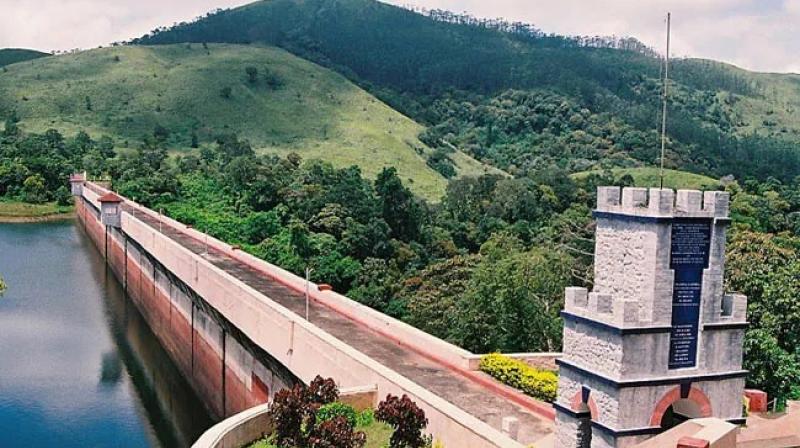
Kerala-TN row: Dam Safety Act and resolution of Mullaperiyar issue
While the Act covers all dams, it has statutes to deal with the peculiar position where the owner is one state and the dam is situated in another state

The Supreme Court recently said the Dam Safety Act, 2021 and its provisions may be a way for resolution of the “impasse” in the 126-year-old Mullaperiyar Dam issue between Kerala and Tamil Nadu.
The court asked the Centre to file a note detailing the timeframe and also when the National Dam Safety Authority (NDSA), envisaged under the Act, would be functional.
A bench headed by Justice AM Khanwilkar is hearing the pleas raising issues pertaining to the dam, which was built in 1895 on the Periyar River in Idukki district of Kerala. Additional Solicitor General Aishwarya Bhati, appearing for the Central Water Commission (CWC) and the supervisory committee, told the bench about the Act and said the legislation had come into force.
Also read: Why Centre, State governments sparred over Dam Safety Bill
“Your lordships may consider, this is a much wider statutory scheme now in place and under this scheme, the authority also has been notified. There is a provision, I will take your lordships through some of the relevant provisions, and this may be a way for the resolution of the impasse that seems to have come,” Bhati told the bench, also comprising Justices AS Oka and CT Ravikumar. The ASG said the Act is for all dams but it also deals with peculiar position where the owner is one state and the dam is situated in another state.
She argued that the NDSA will be the relevant authority for the purpose of the Mullaperiyar Dam issue.
Senior advocate Shekhar Naphade, appearing for Tamil Nadu, also referred to the Act. “All these issues, which are being debated between the two states…that authority is empowered to resolve all those issues. Rather, obliged to resolve all those issues,” the bench observed, adding that the Act is very comprehensive.
Also read: On World Water Day, a look at India’s key inter-state river disputes
“Now, the Act is there. The defined authority is there. All issues in law must go to that authority. Even the supervisory committee established by this court, the efficacy of that, will have to be now gone into,” the bench said.
What the Act brings in
The Act, which came into force in December, is aimed at addressing issues concerning the safety of major dams. It provides for surveillance, inspection, operation, and maintenance of certain dams for prevention of disasters related to dam failure, apart from institutional mechanisms to ensure their safe functioning.
The Act covers dams that are more than 15 metres high and those between 10 and 15 metres with certain stipulations. It seeks to create two institutions, the NDSA and the National Committee on Dam Safety (NCDS), to implement policies and address unresolved issues between states. The NDSA will be the regulatory body. The legislation also envisages the formation of State Dam Safety Organisations and State Committees on Dam Safety. Dam owners will be held responsible for the construction, operation, maintenance, and supervision of dams.
Constitution of NCDS and NDSA
In mid-February, the Ministry of Jal Shakti issued four notifications regarding the NCDS and NDSA. The NCDS will be chaired by the CWC chief. Apart from different Central departments and organisations, the panel includes seven state representatives by rotation, in addition to three specialists in dam safety. The states have been divided into seven groups. The panel will meet twice a year.
Also read: Safety audit of 126-year-old Mullaperiyar dam due, SC told
The NDSA will have five members to assist its chief, dealing with subjects such as policy and research, regulation, disaster, and resilience. It will have four regional offices, providing coordination services with the respective State Dam Safety Organisations and owners of the dams.
How the Act will affect the Mullaperiyar issue
The dispute over the 126-year-old dam centres around its safety. The dam diverts the west-flowing rivers to the east through a tunnel in order to irrigate about 58,650 hectares in the dry southern districts of Tamil Nadu, which owns, operates, and maintains the dam.
The Mullaperiyar Dam comes under the purview of the NDSA – the Act provides that the NDSA will perform the role of the State Dam Safety Organisation for a dam located in one state and used by another.
Besides, the Supreme Court, which has been hearing petition after petition after its judgment in 2014, mooted the idea of extending the powers of its supervisory committee to take over the safety and maintenance of the structure.
In response to the court’s suggestion, the ASG, during the hearing last week, showed the court an alternative in the 2021 law.

